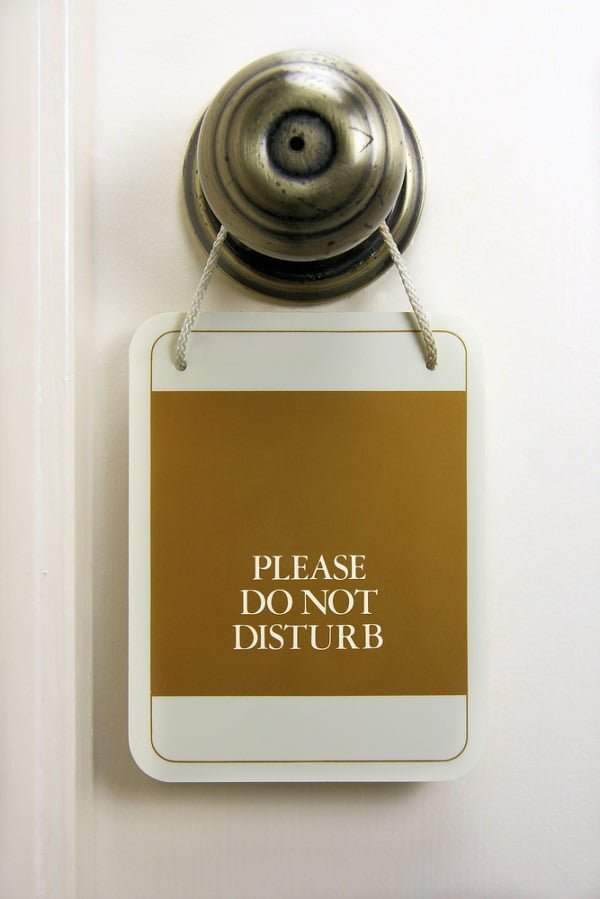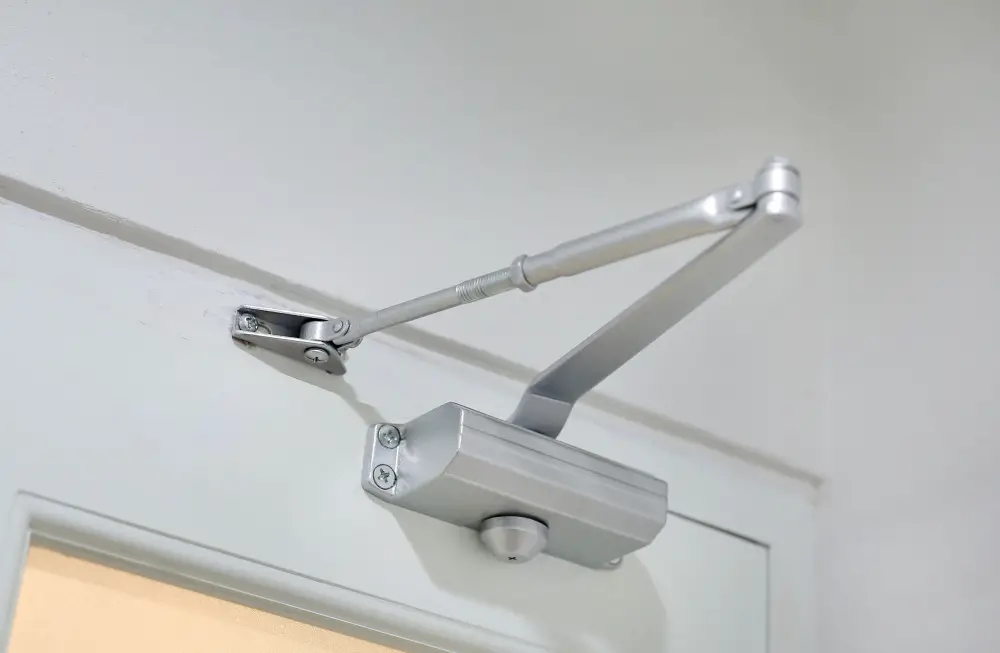Last updated on
Discover innovative door stopper ideas because they offer a practical and stylish solution to stop doors from slamming, preserving the peace and quiet of your home.
Door stoppers can be a simple yet effective solution to prevent your doors from slamming and causing unnecessary noise or damage. There are several creative and functional door stopper ideas that you can easily implement at home.
From classic rubber wedges to decorative fabric door snakes, magnetic door stops to hinge pin door stoppers, each has its own unique benefits and installation methods. This article will guide you through these various options, detailing their pros and cons, as well as providing step-by-step instructions on how to install them.
So, whether you’re dealing with a gusty wind that keeps slamming your doors shut or you simply want to protect your walls and furniture, you’ll find a door stopper solution that suits your needs here.
Table of Contents
Use Weatherstripping Tape

Weatherstripping tape, typically used for insulation, also works effectively to prevent door slamming. The process is well-suited for homeowners seeking a quick DIY solution.
Here’s how to proceed:
- Choose a quality weatherstripping tape. Look for one that’s durable, adhesive, and can withstand temperature changes.
- Clean the door frame. This ensures the tape adheres properly for a long-lasting effect.
- Carefully apply the tape along the edge of the door frame where the door makes contact. Be sure to cover all contact points for maximum efficiency.
- Test the door to ensure the slamming is reduced or eliminated. Adjust or add more tape if required.
The tape not only lessens the impact of the door hitting the frame but also acts as a buffer, offering a softer, quieter close. This DIY solution is both cost-effective and simple to implement, perfect for handling a slamming door problem in a pinch.
Install a Door Closer

Choosing the appropriate type – either manual or automatic – is the first step. Manual models require the user to physically close the door, while automatic variants do so on their own. In either case, installation is quite similar.
The mechanism is typically mounted on the top part of the door, attached to the frame with one end secured to the door. When the door is opened, the closer’s main duty is to control the speed at which the door closes, with adjustable settings for varying speeds. This prevents unnecessary slamming, thus adding a layer of peace to your abode.
Remember that closers are not limited to exterior doors. They can be installed in internal doors, ensuring a quiet environment all around your home. Plus, you’ll discover a range of finishes from metallic hues to more subtle pastel shades, integrating seamlessly into your current décor.
It’s essential to pay attention to weight and size; choose a door closer that can adequately handle your door’s specifications. Advanced units could offer features like hold-open functionality – keeping the door open until manually shut. These are particularly useful in high-traffic areas of your home.
Professional assistance is recommended for installation to guarantee efficiency and long-term reliability. However, DIY enthusiasts can take this task on, considering manufacturers often provide detailed guides with their products.
Apply Felt Pads On the Door and Frame

Felt pads have adhesive backs that are easy to fix onto your door and frame. They are generally used to prevent furniture scratches but work perfectly for this purpose too. The moment the door gets pushed with force, the felt pads absorb the shock, hindering the door from hitting the frame and reducing the slamming sound.
Locate the area of your door that comes into contact with the frame and place your felt pad there. For the most effective results, align the felt pads to the knob’s height and along the bottom of the door. It is easy, cost-effective, and doesn’t require much time to install. A word of advice though- ensure to replace the pads once they wear out for consistent performance.
Moreover, they are easily available in various sizes and thicknesses. Choose a thicker pad to enhance the shock-absorbing capacity. Plus, their neutral colors blend seamlessly with doors of any color, ensuring aesthetics are not compromised.
Use a Door Draft Stopper
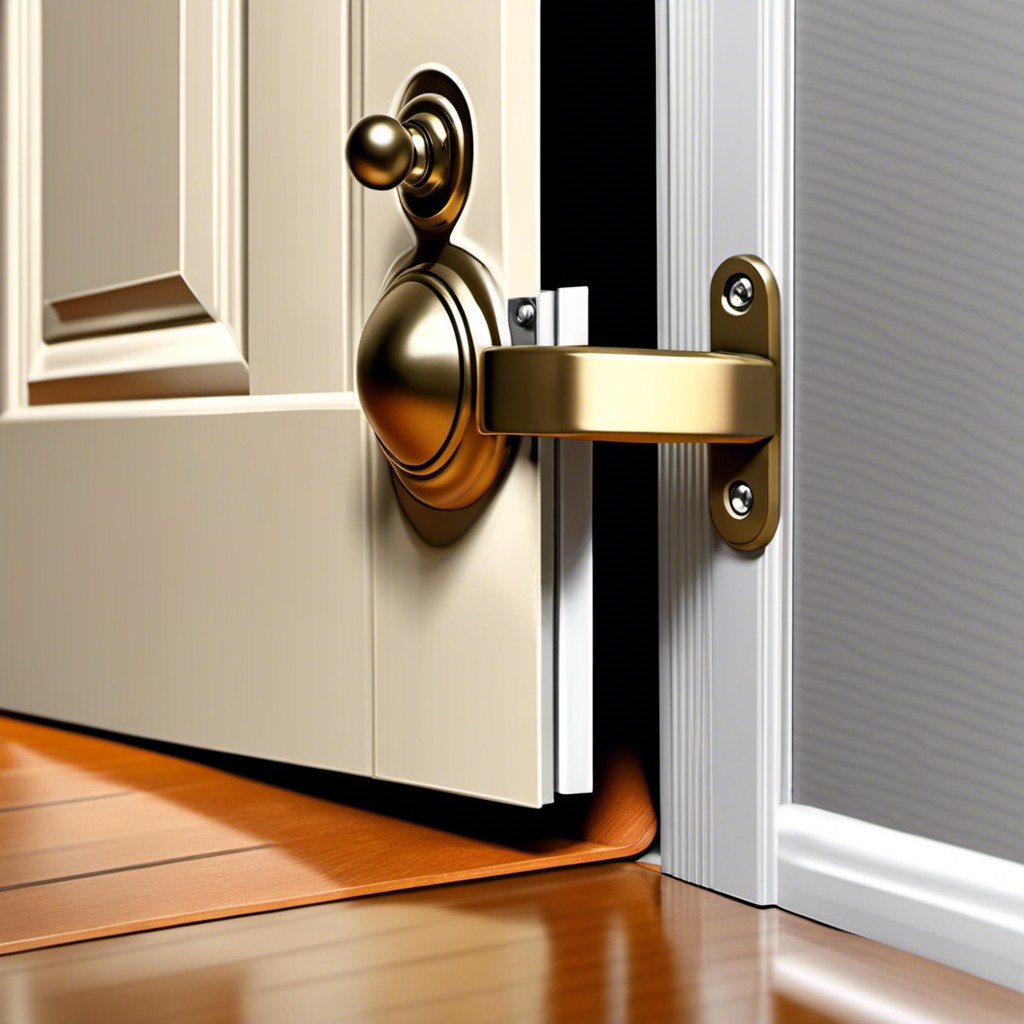
A door draft stopper acts as a buffer between the door and the floor, providing cushioning and reducing the impact when the door is shut abruptly. Besides stopping the door from slamming, it also prevents drafts, hence the name.
The installation process is very straightforward. It’s as simple as measuring the door, cutting the draft stopper to the required length, and placing it at the bottom of the door. They come in a variety of materials including fabric, silicone and foam. Keep in mind to choose one that complements your door and floor type.
If you live in a windy area, a door draft stopper could be especially beneficial. Not only will it cut down on noise from slamming doors, but also help maintain the temperature inside your home by preventing cold air from sneaking in, hence conserving energy.
Install a Door Silencer
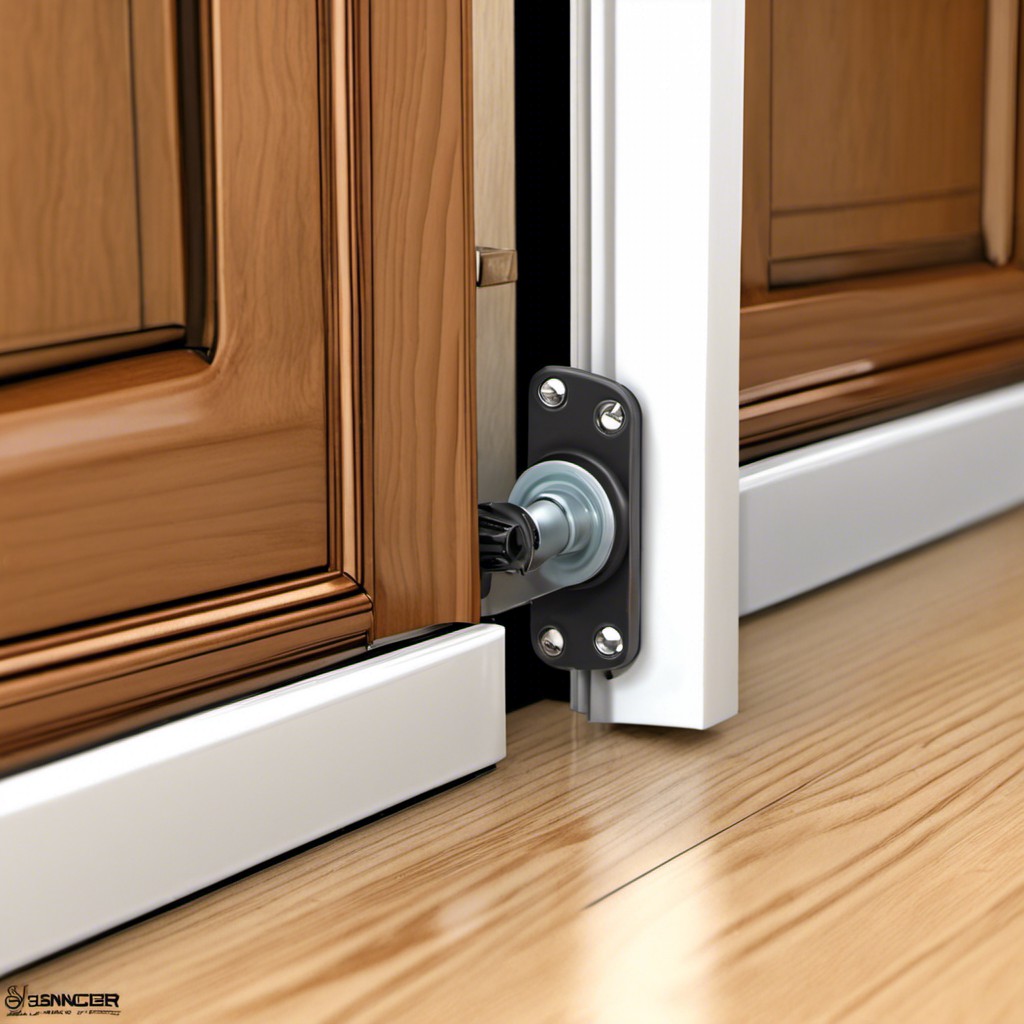
The installation process for a door silencer is straightforward and doesn’t require professional help. All you need is the silencer itself, which is a small piece of rubber or plastic, typically shaped like a U or a circle.
Firstly, determine the part of the door that slams against the frame. Clean this area properly to ensure the adhesive will bond well. Remove the protective layer from the adhesive side of the silencer and stick it firmly onto the spot on the door frame where the door makes contact. Press it for 30 seconds to guarantee a secure bond.
In terms of positioning, silencers are highly flexible; they can be attached on the top, bottom, or side of the door, depending on where it comes in contact with the frame. A key advantage of door silencers is their minimal visual impact—they are small and often clear, so they don’t detract from the aesthetic of the door or room.
Remember, door silencers work best with lightweight and medium-weight doors. For heavier doors, consider using combinations of solutions like door closers, hydraulic hinges, or draft stoppers.
Avoid using cleaners or lubricants on the door silencer. Over time, these can cause the adhesive to weaken and the silencer to fall off. If you notice that the silencer is no longer preventing the door from slamming, simply replace it with a new one. The cost for a pack of silencers is minimal, generally around five to ten dollars — price varying by brand and quantity.
Try Rubber Door Wedges
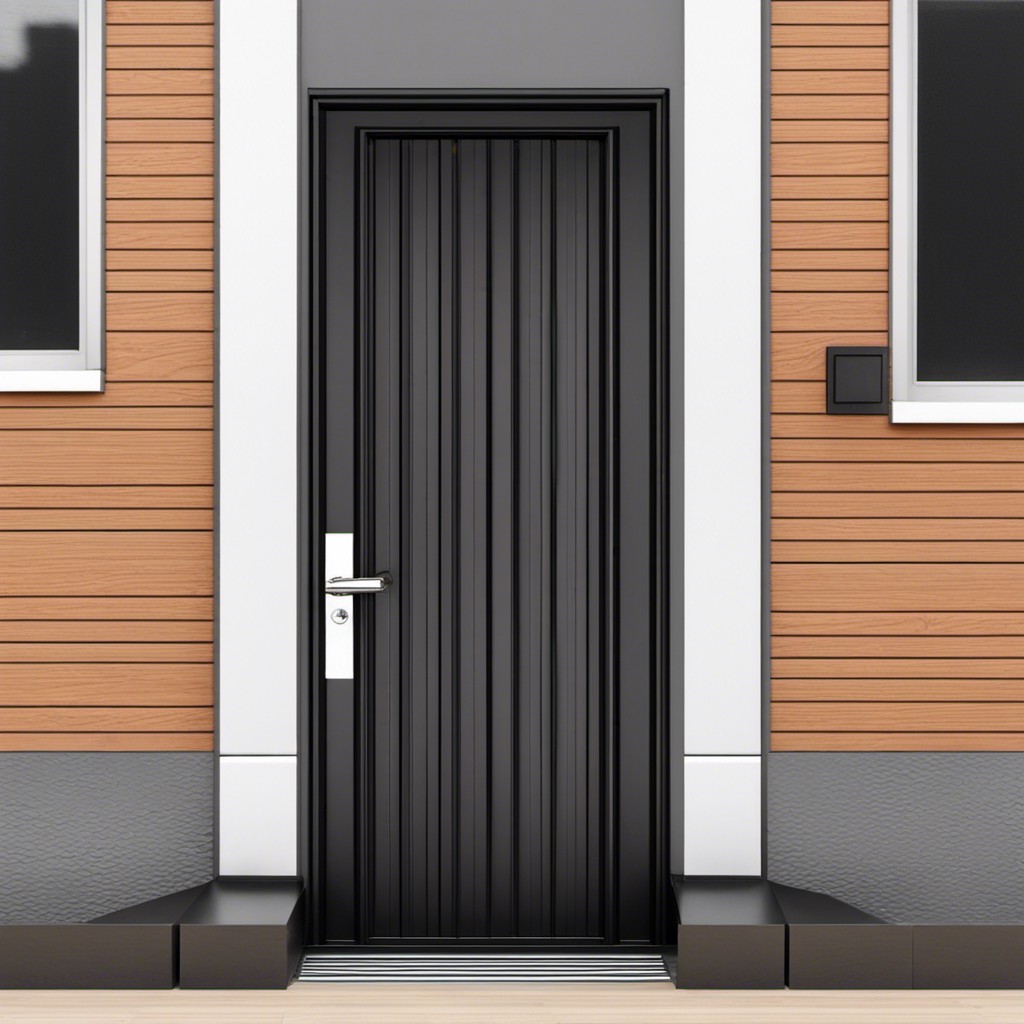
Rubber door wedges effectively alleviate the issue of slamming doors. These easy-to-use and inexpensive devices get wedged under the door, providing friction that prevents slamming.
1. Select the Right Size: Rubber door wedges come in different sizes to fit various door gaps. Ensure to measure your door gap and select a wedge that fits snugly.
2. Installation: With no need for tools or drilling, simply tuck the wedge under the door where it meets the floor. It’s the simplicity that makes this solution popular in many households.
3. Versatility: Whether your floor is carpeted, wooden, or made of tile, the rubber wedge is versatile and works on all surfaces. Plus, it’s portable, allowing usage on multiple doors as needed.
4. Maintenance: Cleaning these wedges is a breeze. Wipe with a damp cloth to remove dust or grime, ensuring long-lasting effectiveness.
Remember, placement is key when using rubber door wedges. Too far from the hinge could mean an insecure hold; too close might not provide enough friction to prevent the door from slamming. Find the right balance to ensure optimal performance.
Install Hydraulic Hinges
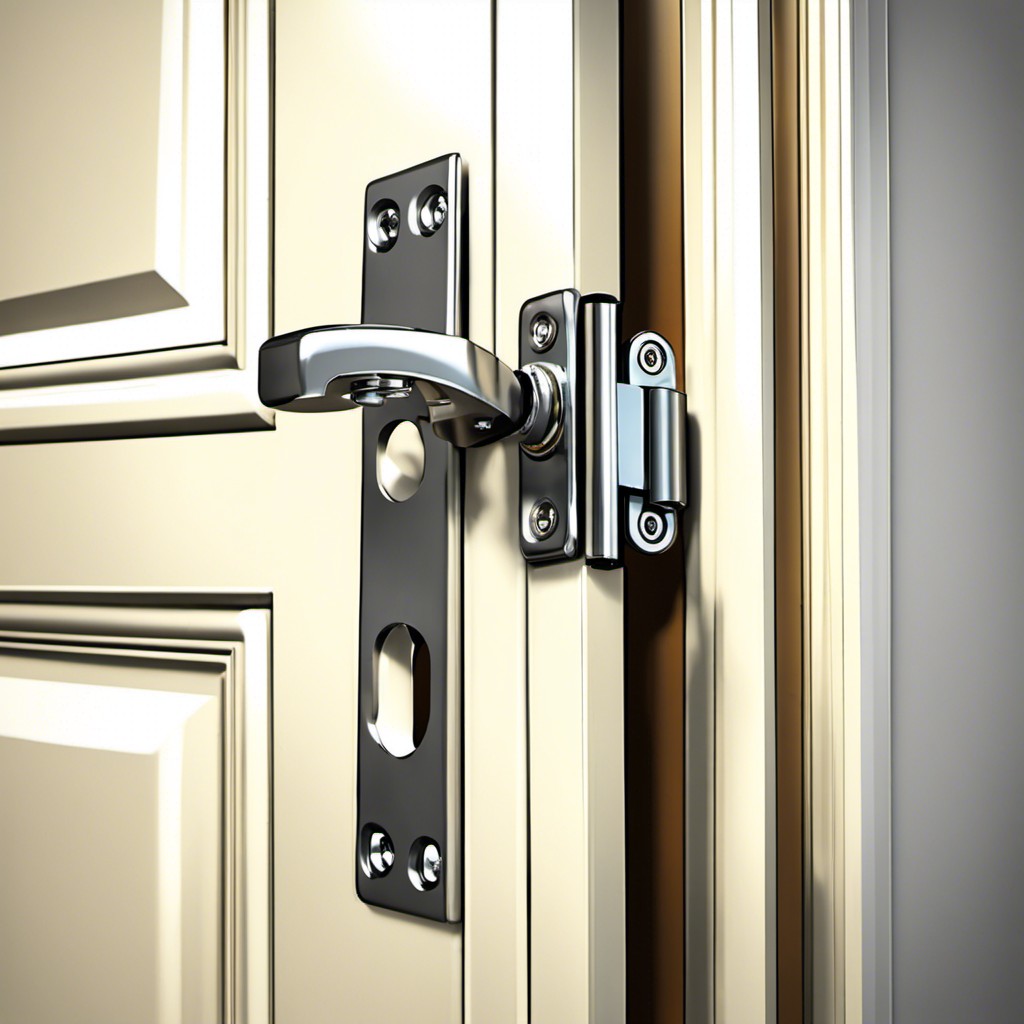
Hydraulic hinges serve as a convenient alternative to traditional window latches. What sets these apart is their ability to control the speed at which the door closes, potentially avoiding any slamming.
To install, just follow these simple yet effective steps:
- Remove the current hinges: Begin by taking off the door. Depending on your door’s configuration, you might need a screwdriver or a hammer to do this.
- Replace with hydraulic hinges: Check the dimensions of your new hinges to ensure they will fit perfectly with the door, then secure them using a screwdriver.
- Adjust the closing speed: Most hydraulic hinges come with a control feature to adjust the closing speed. You can tweak it depending on your preference.
By opting for this solution, you are bringing home a reliable, durable, and cost-effective mechanism. Avoiding door slams has never been easier!
Use Magnetic Door Holders
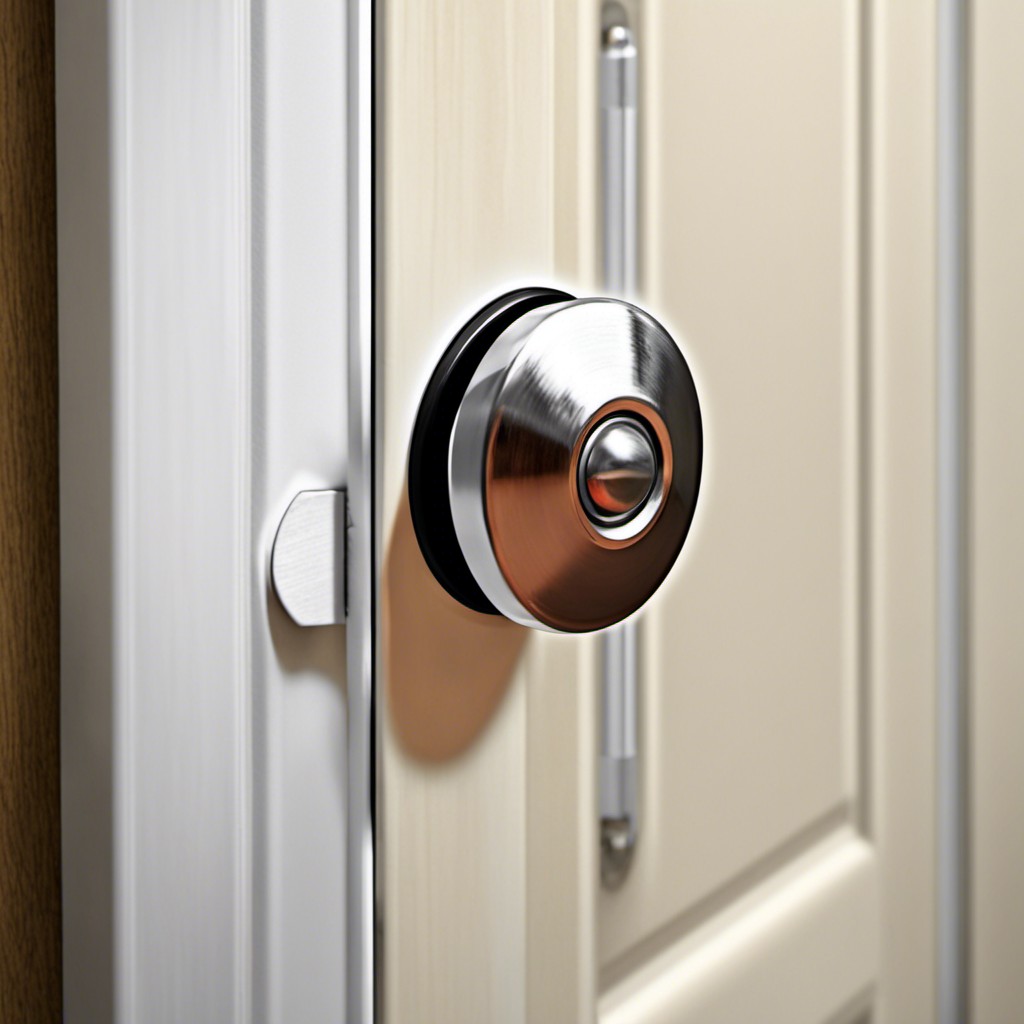
Magnetic door holders are ideal fixtures worth contemplating. They function by using a magnetic force to keep the door open until intentionally closed. This prevents sudden, unexpected slamming, especially when there’s wind or draft.
To use magnetic door holders effectively:
- Choose a Resilient Model: Higher magnetic force equates to better holding power. Make sure to select models specifically designed for doors.
- Ideal Placement: The bottom of the door is often the best spot for installation, as it’s less noticeable and can effectively prevent slamming.
- Proper Installation: Follow provided instruction manual carefully. Usually, one piece gets screwed into the door while the second piece mounts on the floor directly beneath it.
- Quality Check: Regularly check the condition of the magnet and replace if necessary to maintain optimal performance.
Remember, safety and door preservation should always take priority over aesthetic appeal.
Install Soft Close Door Dampers
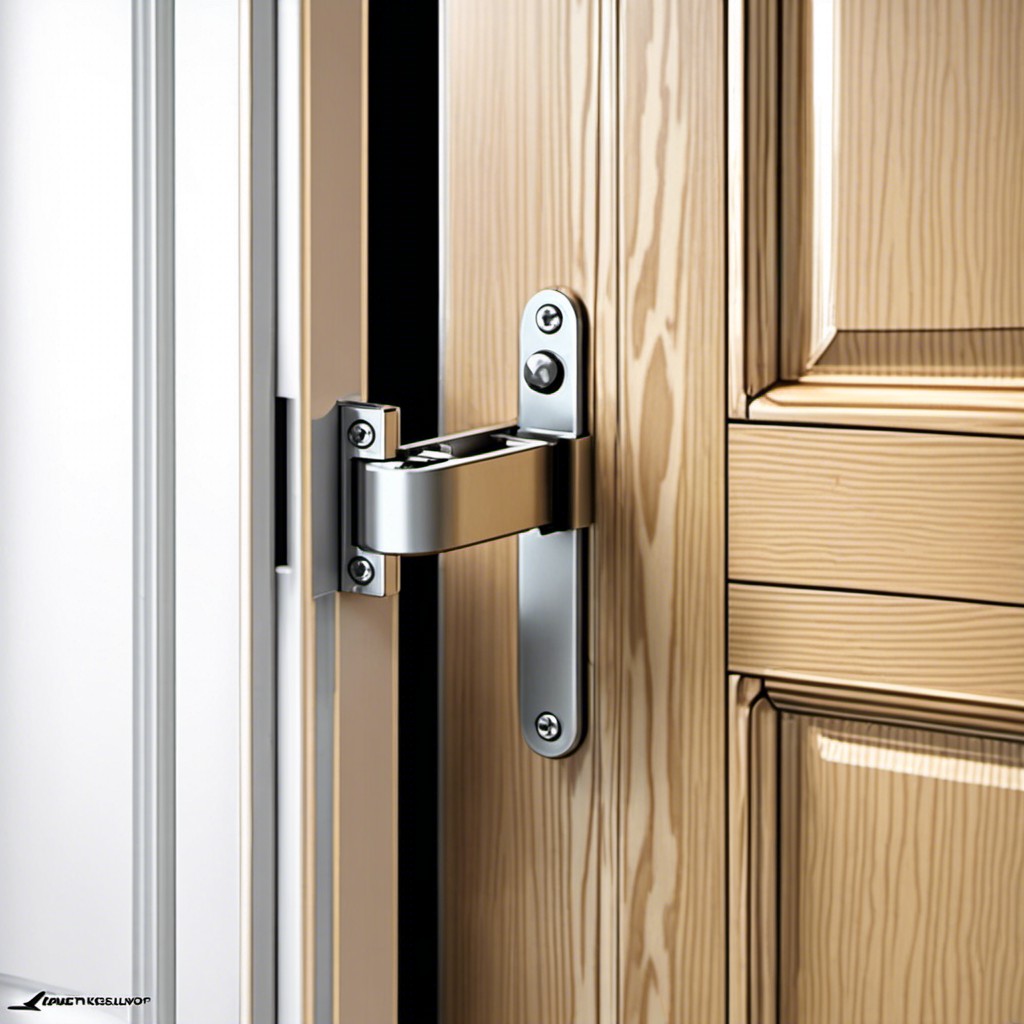
The appeal of soft close door dampers lies primarily in their versatile and straightforward application. They function by slowing down the door’s closing speed, which prevents banging or slamming. Once installed, they engage automatically as the door closes, ensuring a slow and gentle shut each time.
To put one in, all you need is a simple toolkit. Typically, these devices are positioned along the edge of the door, ideally close to the upper hinge. They mainly come with a set of screws for straightforward installation. You just secure the device in place by tightening the screws into the pre-made holes.
An added advantage is their adaptability. Soft close door dampers come in a variety of sizes and styles, making them suitable for numerous door types, be it the heavy front door, a lively kid’s room door, or even gentle kitchen cabinet doors. They offer an unobtrusive solution, their design usually sleek and inconspicuous, preserving the aesthetics of your home decor.
While this option involves some small level of handiwork, the effort pays off by extending the lifespan of your doors, reducing noise, and making your home environment a bit more peaceful.
Use Foam Tape Around the Door Edges

Foam tape, particularly the kind specifically designed for insulation purposes, is a versatile option for preventing door slams. The functionality is principally twofold: it not only cushions any impact, but it also reduces the speed of the door swing caused by drafts or abrupt pushes.
To utilize this method you would:
- Measure the length and breadth of your door edges.
- Purchase the suitable size of foam tape.
- Clean the surface where the tape will be adhered.
- Apply the tape along the door frame’s edges to create a buffer which softens the slam.
It serves as a rather economical and unobtrusive solution that doesn’t interfere with your door aesthetics. Moreover, foam tape can improve the energy efficiency by reducing drafts, making it a worthy investment.
Remember to replace the tape when it becomes worn or compressed to ensure its effectiveness.
Hang Heavy Curtains Near the Door

Adding depth and texture to your interiors, heavy curtains can also prevent doors from slamming shut. To achieve this, ensure the curtains are strategically placed to hinder the door’s untamed movement. The heavier the fabric, the better; materials such as velvet, brocade, or heavyweight cotton are ideal. They act as buffer, absorbing the impact of a swiftly moving door, thus reducing the closing speed. As a bonus, they also provide sound insulation and boost room aesthetics.
For maximum effectiveness, make sure the curtains cover the entire door’s width and extend to the floor.
Use a Baby Proofing Door Slam Stopper

In terms of safety and effectiveness, baby proofing door slam stoppers are a superb choice. Designed to prevent slamming while also keeping little fingers safe, these nifty gadgets offer dual benefits.
Simple to install, they can be placed on the top or side of the door, effectively preventing it from closing completely.
There’s nothing complicated about using one. Just slide it onto the door edge and you’re all set. Some models come with adhesive backing for a sturdier hold. They are also easy to remove and won’t leave marks or damage.
Made from soft, flexible material, they absorb the shock of the door making them an efficient, quiet solution. Plus, they are widely available and come in several designs to match your decor.
Remember, baby proofing stoppers are not only for houses with children, they can be used in any home setting to combat door slamming issues. It is a practical, cost-effective solution worth considering.
Hang a Door String Stopper

A door string stopper effectively prevents slamming, providing both functional and decorative appeal. Installed conveniently at the top of the door, it allows for easy reach and manipulation.
Here’s how to integrate this clever device into your home:
- 1. Select a stopper that matches your decor: They are available in an array of materials and aesthetics, from the minimalist to the ornate.
- 2. Right Placement: It should attach to the top corner of the door; this optimal positioning will catch the door before it has the chance to slam, reducing noise and potential damage.
- 3. Simple Installation: Generally, it comes with easy-to-follow instructions and most can be installed using common household tools.
- 4. User-friendly: One reason many opt for this stopper is for its ease of use, especially for children and taller people who don’t have to bend over to adjust it.
- 5. Dual-purpose: Apart from preventing slamming, it also protects children’s fingers from doorway injuries.
- 6. Affordability: It’s an inexpensive, yet powerful solution to noisy, slamming doors.
Remember, while aesthetics is key, choose one sturdy enough to withstand consistent usage. After all, its main task is to keep doors from slamming. Be sure to check durability and user reviews before making a purchase. Happy decorating!
Attach Adhesive Bumpers to the Door Frame
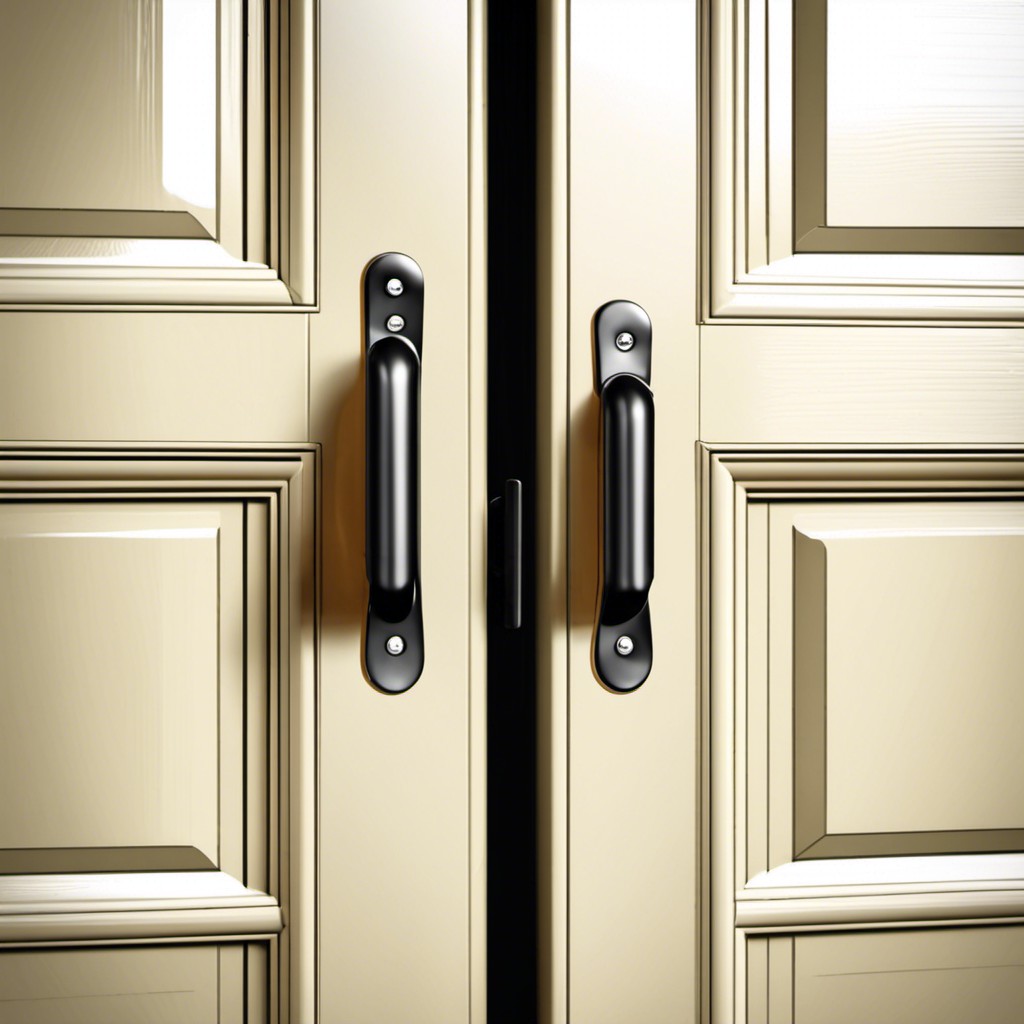
Adhesive bumpers, commonly made of rubber or silicone, can significantly minimize the slamming noise. These small yet effective tools cushion the impact between the door and frame, reducing both noise and potential damage.
To use them effectively, start by cleaning the area on the door frame where the door makes contact. Once it dries, peel the backing off the bumper and firmly press it onto the frame. Since these bumpers are self-adhesive, they are easy to install with no tools required.
It’s important to pay close attention to door height and the contact point. Installing multiple bumpers might be necessary for taller doors.
Durable and discrete, adhesive bumpers are a great solution for metal, wood, or glass doors. They are available in different colours to match door frames seamlessly, ensuring a neat finish.
Replacement is simple when their effectiveness reduces due to wear and tear, proving them to be a hassle-free long-term solution for slamming doors.
Use Door Socks Filled With Sand or Rice
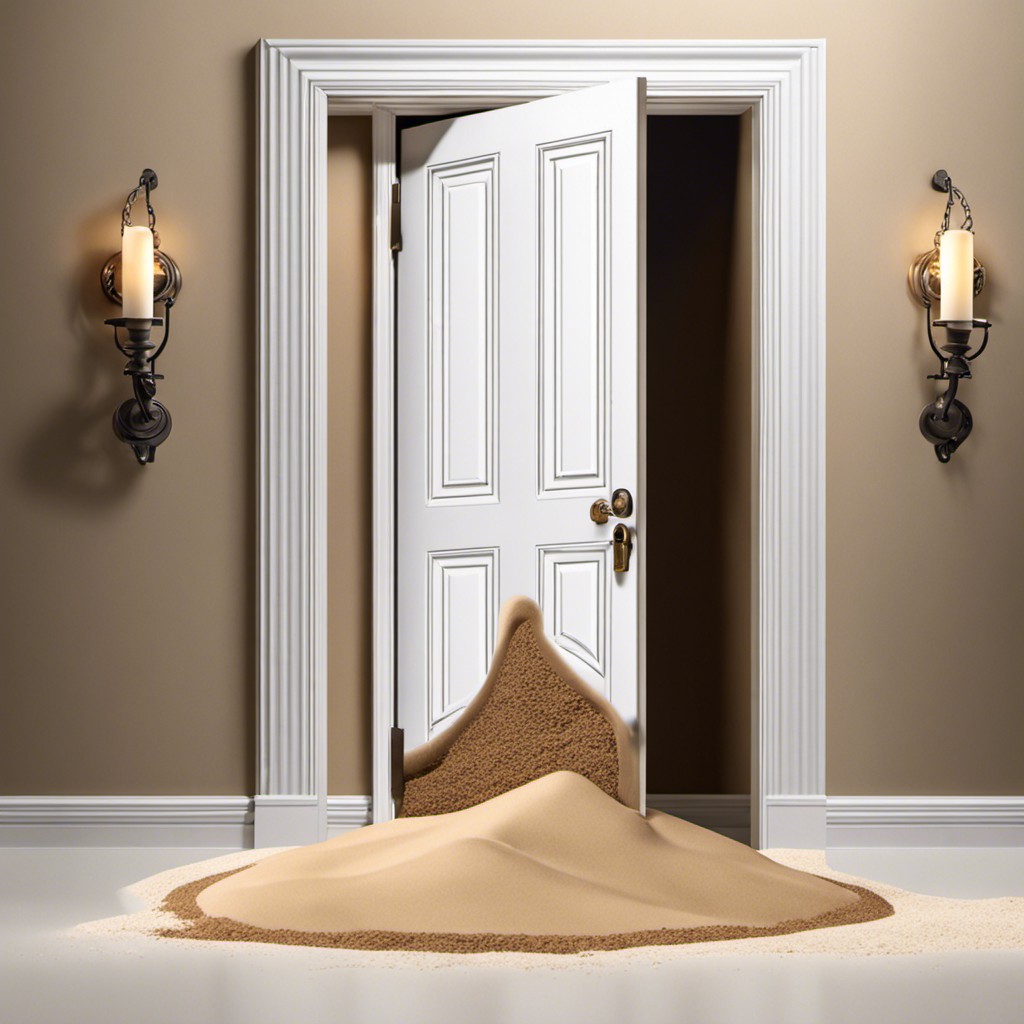
Door socks can be quite handy and are relatively easy to make. They are essentially cloth bags filled with sand or rice that can be placed against the base of the door. You can fashion these using a pair of old socks and any sand or rice you might have handy. The heavier the filling, the more effective the door sock will be in preventing the door from slamming.
With their unique design, door socks manage to both block drafts and prevent the door from slamming shut. These genius gadgets can easily be moved according to your needs, and you can store them away during the warmer months.
The main advantage of door socks is their convenience. They offer an easy solution without requiring any major installations or alterations to your door. Plus, they can also serve as a decorative element that adds a touch of personality to your interior decor. You can choose socks that complement your room’s color palette or go for a bold pattern that stands out.
They are also an excellent choice if you’re in a rental property, as they don’t cause any damage or leave marks on the door.
Use a sturdy, heavy-duty sock for longevity, and consider double-stuffing the sock for added weight. Creating a door sock could be a great DIY project that’s not only functional but also enjoyable.
Stick a Suction Cup Door Stopper
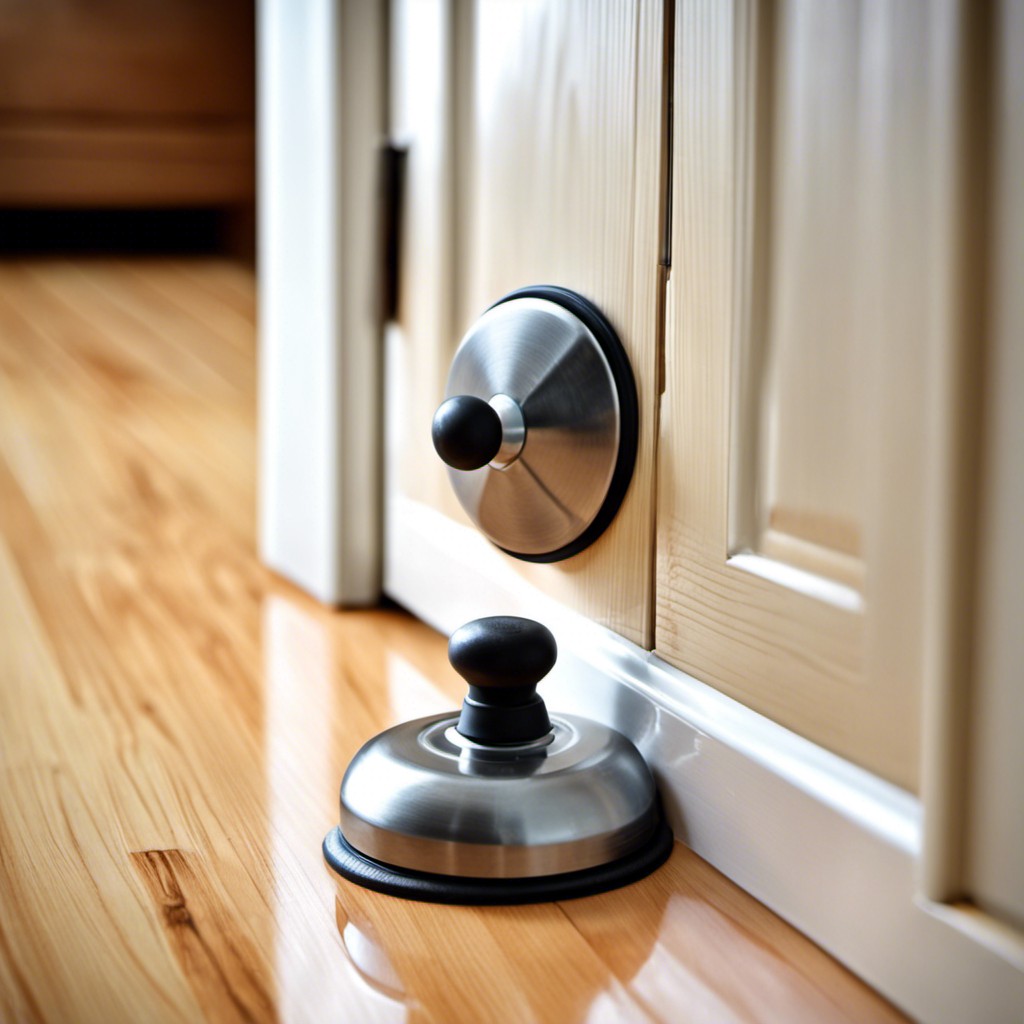
Known for their versatility, suction cup door stoppers can be repositioned as needed, and their installation is almost child’s play. Unlike screw-fixed products, no drilling or permanent alterations to your door or floor are required, making them tenant-friendly.
Select a suction cup of appropriate size to maintain a secure grip on both the door and the floor. To heighten effectiveness and reduce slippage, thoroughly clean the surfaces before installation. Simply moisten the suction cup, press it against the door base, and then press the other end onto the floor.
As the door approaches, the suction cup stopper provides a cushioned barrier, preventing loud impact with the wall or door frame. This cost-effective solution not only saves your walls and ears from harm but also your vacuum from acquiring dust from fallen plaster.
Install a Pneumatic Door Closer
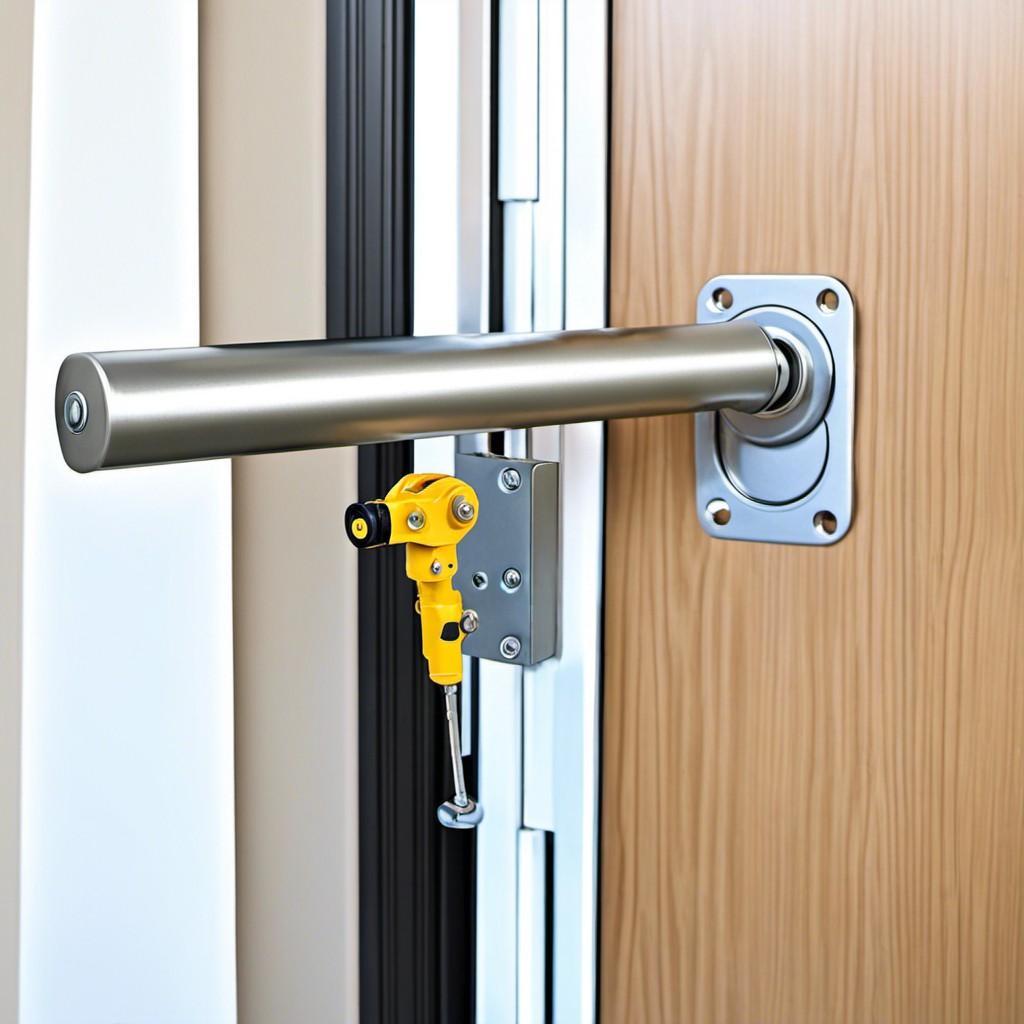
To ensure your door closes steadily and slowly, a pneumatic door closer ranks as an effective choice. Functioning through a mechanism that employs compressed air, it offers controlled motion, reducing the chance of door slamming.
One key benefit is that these devices are easily adjustable, allowing tailoring of the door’s closing speed to your preference. Installation typically requires few tools and a basic understanding of DIY tasks, making it an achievable project for most homeowners.
Remember, for optimal functioning, the closer must be correctly positioned. Usually, the device is installed towards the top of the door, ideally 6 inches below the top edge. It’s critical to follow the manufacturer’s instructions for specific measurements and installation steps.
Moreover, the aesthetic aspect of these door closers shouldn’t be overlooked. With a wide range of styles and finishes available, finding one that complements your door and overall decor won’t be difficult. Choose a model that seamlessly blends with your home’s style, offering both functionality and a pleasing visual aesthetic.
Regular maintenance is also crucial for longevity, including seasonal adjustments to compensate for weather changes that can affect door workflow. However, it’s a small sacrifice for the tranquility of a house free of door slam annoyances.
Put in a Door Finger Protector
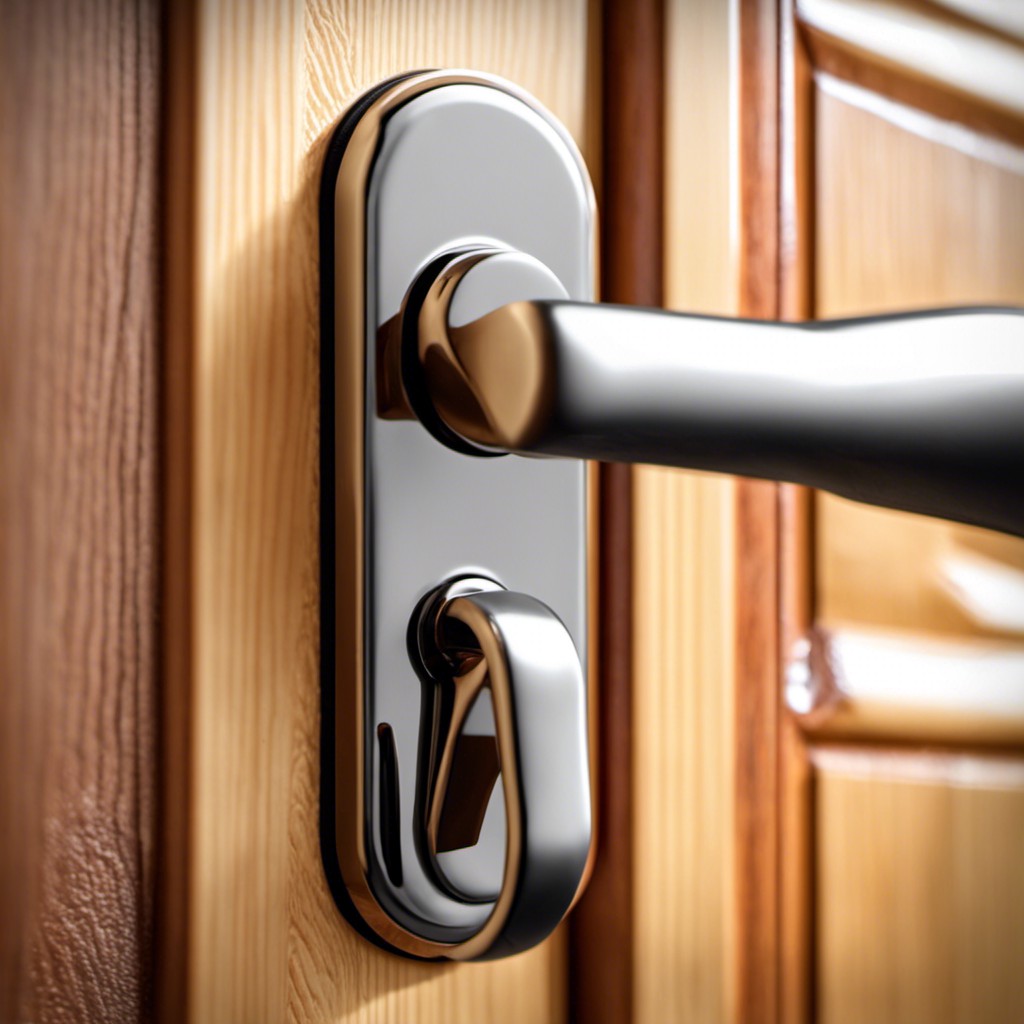
Door finger protectors offer a dual function. Primarily, they prevent the door from slamming, serving as effective stoppers when installed correctly. Moreover, as their name implies, they protect from accidental finger pinching, particularly common in homes with young children.
To install, you’ll simply need to follow these steps:
- Identify the suitable size: They come in a selection of sizes, fitting any standard door, so measure your door thickness before the purchase.
- Fix the protector: Attach the protector on the side of the door that closes against the door frame. It’s usually strip-based, making its installation quick and hassle-free.
- Check the operation: After installation, ensure the door opens and closes smoothly without slamming. If the protector obstructs the door functioning properly, adjustment is required.
Remember, frequent checks and necessary adjustments will help keep the protector effective for longer. Not only do door finger protectors help prevent slamming, but they also ensure that everyone’s hands are safe from any potential accidents.
Use a Hinge Pin Door Stopper
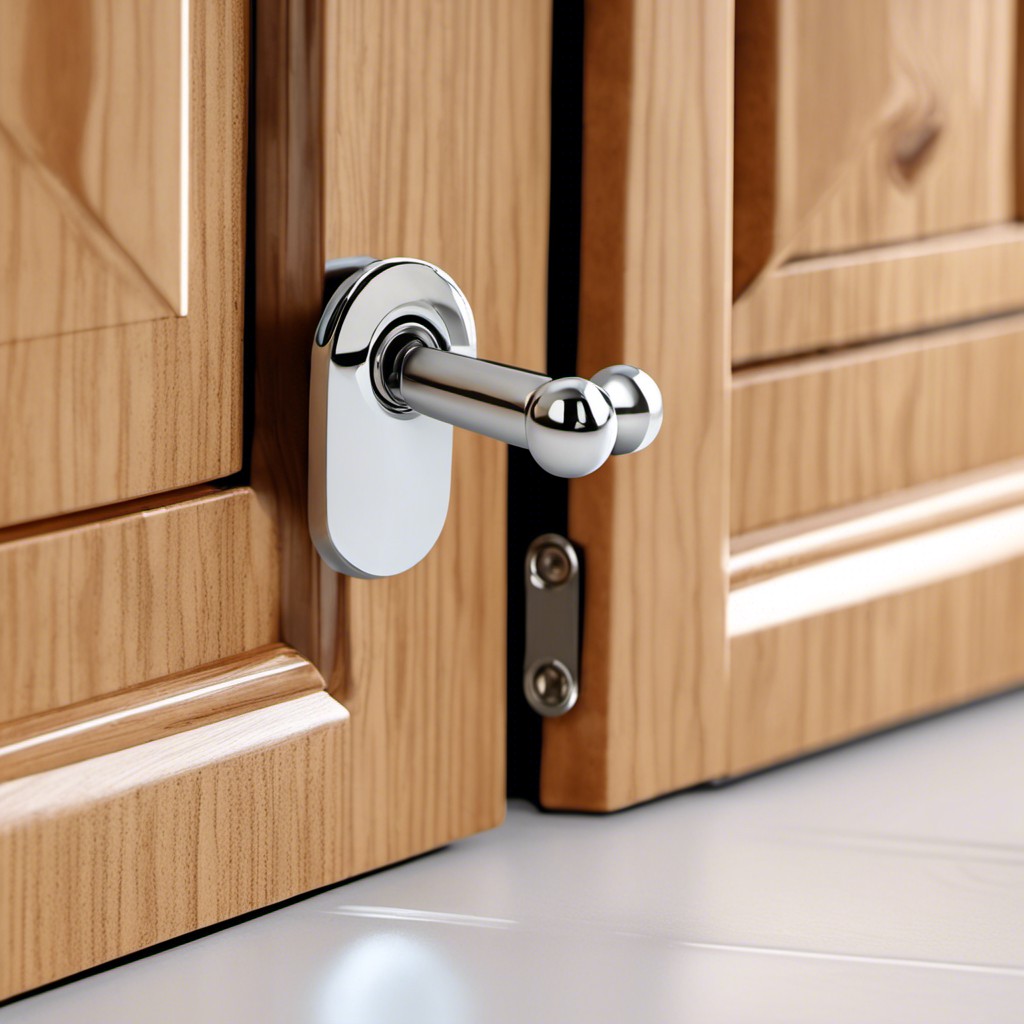
This easy-to-install device operates quite simply. By replacing the existing pin with the hinge pin stopper, every time the door swings, the stopper’s cap comes in direct contact with the door frame, thus preventing it from slamming shut.
Consider adjusting the stopper’s angle if the door still operates too freely, as this will adjust the degree to which it opens. With an array of styles and finishes on the market, homeowners can find a hinge pin door stopper to match an array of interior designs.
Remember, these work best on lighter, interior doors as heavier doors may require a sturdier solution.
Install a Rubber Band Door Stopper

Preparing the rubber band stopper involves minimal effort. You’ll first require a wide, strong rubber band. Loop the band over the doorknob on each side of the door; it should cross the latch.
This ingenious method cushions the door, preventing a harsh collision with the door frame. Be aware that it’s most effective on lever-type doorknobs. Round knobs may require modification so the band is securely in place and doesn’t slip off.
What’s truly advantageous about this method is the cost-effectiveness and simplicity, making it accessible to anyone immediately. It’s especially useful for a quick, temporary solution, such as when a baby is sleeping or during particularly windy days.
However, keep in mind that while it’s handy in these scenarios, it might not be a long-term solution for heavy or often-used doors that need a more robust and durable solution.
You may also like to read:

